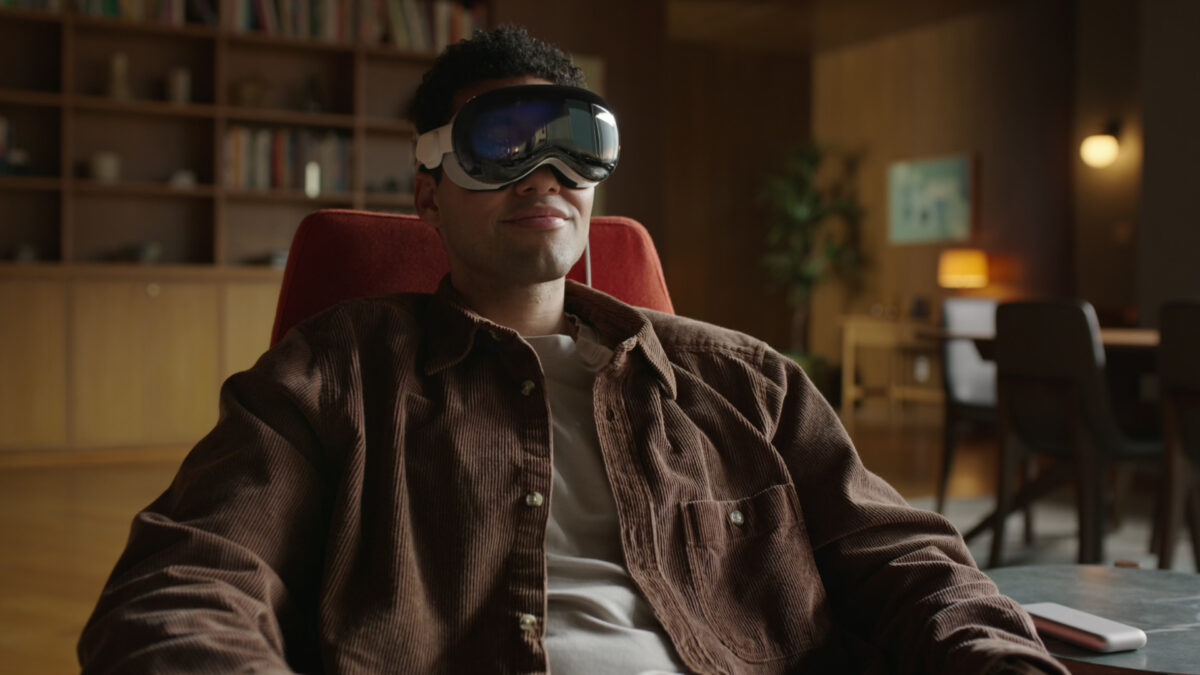Apple keeps quiet about Virtual Reality and that is ingenious

The Apple Vision Pro is the iPhone maker's first AR/VR headset, but it doesn't say a word about virtual reality – and that's clever.
The keynote at the start of this year's WWDC had its “one more thing” moment: After years of speculation, Tim Cook announced the Apple Vision Pro. Although the headset is undoubtedly capable of the technology, Apple didn't use the term “virtual reality” once during its detailed presentation of all the features. Why not?
Apple Vision Pro: VR gaming? I don't care
While the presentation was still going on, I was left wondering: where are the fitness apps? If there's one use case suited perfectly to a mobile VR/AR headset, it's working out in an immersive gym. Combined with Apple Health and the Apple Watch's comprehensive fitness tracker, it's a no-brainer, you'd think.
In another comment, I pointed out that I thought VR gaming was the big selling point for VR headsets, and that Meta desperately needed it to survive. I still feel that way – maybe now more than ever. But Apple is a different story. The Apple Vision Pro doesn't need games to succeed. It doesn't even need virtual reality.
Virtual reality and its reputation: It's complicated
We all love virtual reality around here. VR can create special moments like no other medium. The immersion is unparalleled and the range of applications is vast – from gaming to medical use. But there are also drawbacks that the technology has been struggling with for years. And, as is often the case, bad news tends to stick around longer than good news.
The term “virtual reality” has a rather ambivalent image. Since the late 1980s, VR has promised a lot and regularly failed to live up to the often exaggerated expectations of the public (VR is not the holodeck of the Enterprise and never will be!).
Add to that disastrous decisions like smartphone VR and sometimes immature hardware and software, and many people's VR experience has been tarnished and their opinion of the technology has been negatively impacted in the long term. If the first VR experience is extremely bad, how likely are people to engage with a second one?
Thanks for nothing, Metaverse
The many “small” successes and technological advances are trickling into the mainstream only in homeopathic doses. Instead, we get stories about Zuckerberg's embarrassing selfie, reports of harassment on Metaverse platforms, and dystopian theories a la Ready Player One. Then there's the inflationary use of the term “metaverse”.
Until recently, every coffee mug at some trade shows was Metaverse-ready, without anyone explaining what that actually meant. Thanks to an unnecessary and flawed PR offensive by the tech industry, “metaverse” now has a negative connotation and is, for many, inextricably linked with virtual reality. Thanks for nothing, Metaverse.
Understandable language, understandable benefits
The terminological roulette that Microsoft, Meta, Pimax, HTC and others have been playing for the past few years has also created unnecessary hurdles for outsiders. When is it Augmented Reality, when is it Mixed Reality? Can a Mixed Reality headset also do VR, and what are Passthrough AR and Meta Reality?
Apple doesn't get into all that and instead relies on an understandable vocabulary and simple, but (presumably) very well-working applications. Typical VR problems like motion sickness usually do not occur when watching TV on a virtual screen or working in an immersive office. The much-discussed isolation? Hey, we have a dial that makes it easy to set the desired level of immersion. Ingenious!
Apple wants the mass market, not a niche
This approach is smart. Because Apple wants Vision Pro to be a new beginning for immersive technology, a revolution without the negative connotations and bloated technical terms that no one understands.
In the long run - maybe even in its fourth or fifth iteration – Apple Vision Pro is meant to change the way we interact with technology in our everyday lives.
And the “we” in that sentence includes all of us. Not just the hardcore VR bubble that “works out” motion sickness. Not just the tech nerds who see every bug as a challenge. Not just the gamers looking for the next Half-Life: Alyx. Apple wants the mass market, and it has always achieved that through ease of use, smooth performance, and accessibility.
VR can't do all that today, so it doesn't have a prominent place in Vision Pro (yet). Until it does, it will eke out a niche existence in Apple's headset. If Apple's Spatial Computing takes off, perhaps even approaching the importance of the smartphone, virtual reality will also benefit from its success. Maybe under a different name.
Note: Links to online stores in articles can be so-called affiliate links. If you buy through this link, MIXED receives a commission from the provider. For you the price does not change.